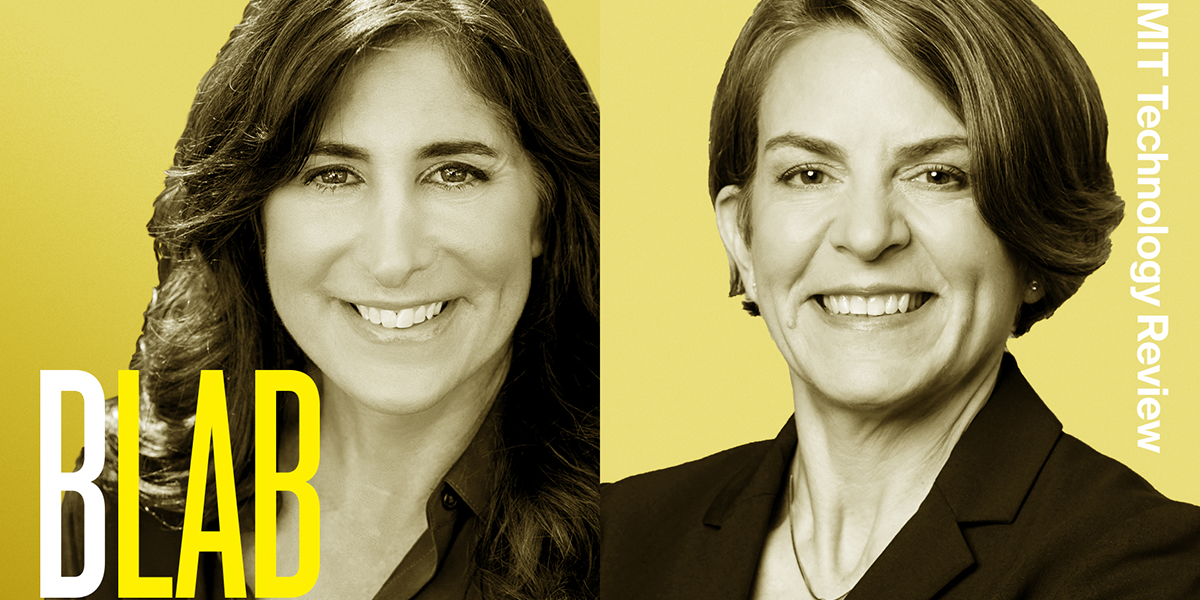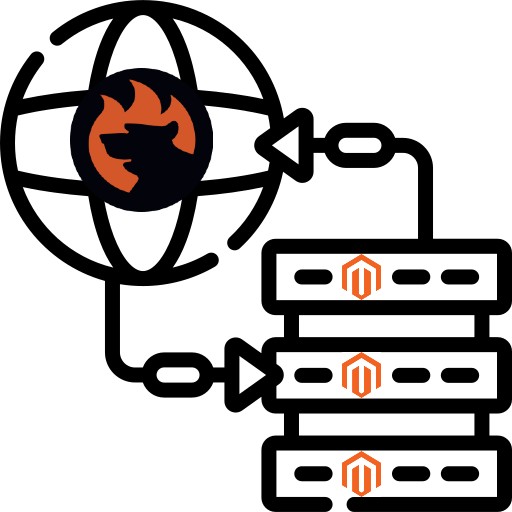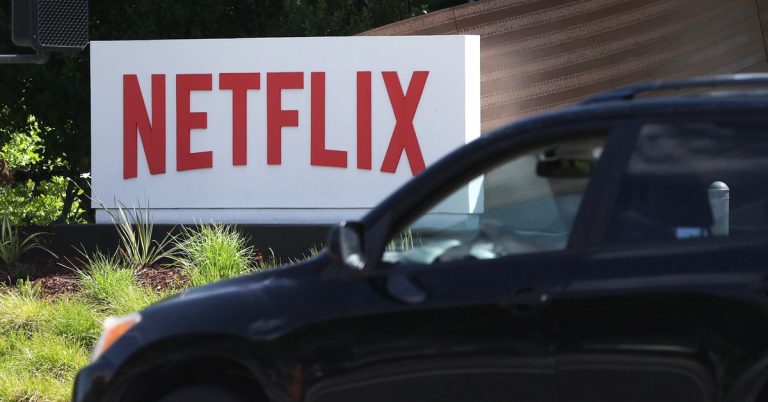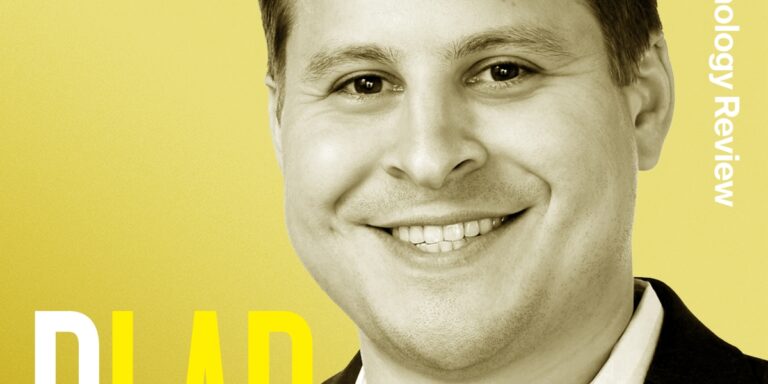
The global pandemic accelerated the trend toward a work-from-anywhere, distributed workforce. As we approach a post-pandemic world, companies—and employees—expect this trend to become the norm. While IT departments are rapidly configuring and deploying devices, infrastructure, and software to support the shift in a secure and productive way, employees are likewise having to reset priorities and learn new ways to engage with their coworkers and managers, and to navigate their career goals. This shift requires not only changes in technology and IT approaches, but also culture changes for companies and employees alike.
Jenn Saavedra, Dell Technologies’ chief human resources officer, distills the required cultural shift through the lens of Dell’s mission to be people centered. “Our people philosophy,” explains Saavedra, “is ultimately about how to inspire people to be their best and do their best work.” To achieve this goal, Dell focuses on four core areas: a) achievement, b) balance, c) connection, and d) diversity and inclusion. “We want to enable people to achieve their career goals, to be successful, and continue to grow, learn, and perform,” she says.
None of this was easy—companies across the globe struggled to mitigate the technological and cultural changes required to meet a work-from-anywhere business environment. “Like every other IT organization, we really rallied and made that happen,” says Jen Felch, chief digital officer and chief information officer at Dell Technologies. “You need to keep up so that you are ready for anything, she says. “Companies that were prepared with remote access, with having modern equipment, etc., were more prepared for the rapid work from home.”
Looking to the future, Saavedra says companies need to continue to work with—and for—employees. “Because of the degree to which people’s lives and routines were disrupted over the past 18 months, we’ve challenged and redefined the long-held assumptions about the world of work, where we work, how we spend our time.”
It’s important, Saavedra says, to get past the common mantra that we can’t wait for things to go back to normal and to get back to doing things the way we were. “It’s really important that we move forward into the future, not look backwards— that’s not ever a strategy for success.”
Show notes and references
Full transcript
Laurel Ruma: From MIT Technology Review, I’m Laurel Ruma, and this is Business Lab, the show that helps business leaders make sense of new technologies coming out of the lab and into the marketplace.
Our topic today is how companies are balancing the new work-from-anywhere trend in a post-pandemic world. IT departments are rapidly configuring and deploying devices, infrastructure, and software to support the shift in a secure and productive way. At the same time, employees have to reset their priorities, values, and what they demand from potential employers. Two words for you: culture matters.
My guests are Jen Felch and Jenn Saavedra. Jen Felch is the chief digital officer and chief information officer at Dell Technologies, and Jenn Saavedra is Dell Technologies’ chief human resources officer. This episode of Business Lab is produced in association with Dell Technologies. Welcome Jen and Jenn.
Jen Felch: Thank you.
Jenn Saavedra: Thanks for having us.
Laurel: To start, Jen Felch, could you talk about what it means to lead technology in the Dell digital way? Is that borrowed from the Toyota Way?
Jen Felch: I hadn’t thought about that connection before, but I love it. When you think about the Toyota production system being all about lean processes, that is very much what the Dell digital way is all about. It is about looking at how we build human-centered solutions, either for our customers or our employees, that allow us to be efficient internally while also creating compelling experiences. I hadn’t drawn that connection with Toyota before, but I think there is a nice connection in what both processes aspire to, which is building great solutions, and building great products for our customers.
Laurel: Jenn Saavedra, could you talk about Dell’s people strategy and culture code?
Jenn Saavedra: Sure, I’d be happy to. One of the things you’ll see at Dell Technologies is that those themes Jen Felch talked about are carried through in terms of being people-centered, or human-centered, and creating compelling experiences.
That’s the same when it comes to our people philosophy and our culture code, but our people philosophy is ultimately about how to inspire people to be their best and do their best work. Within that, we have four core focus areas. And it’s pretty simple: A, B, C, and D.
The A is all about achievement. We want to enable people to achieve their career goals, to be successful, and continue to grow and learn and perform.
The B stands for balance. Especially in the last 18 months, that’s a topic that’s been getting a lot of interest, but it’s really about having a full and fulfilling personal and professional life. The C stands for connection. That doesn’t just mean technology connection; it also means relationship connection to each other, and connection to the culture. And the D stands for diversity and inclusion, and how important that is to be successful as a company.
That’s our people philosophy, and those are the commitments and the focus areas, and the investment areas that we make to provide a wonderful fulfilling environment where everybody can thrive.
The culture code is around expectations for how we work and lead across the company, with each other, with our partners, and with our communities. Nobody has to come into Dell Technologies and wondered, “How do I navigate this culture? What does success look like?” This is something we all share to make sure we have the culture to enable our people and our strategy.
Laurel: Continuing on that point, Jenn, what does the future of work and employee experience look like?
Jenn Saavedra: That’s probably the number one question right now for team members and employees, for companies, for candidates, for people graduating from college, all thinking about what that means. That’s because over the last 18 months, people’s lives and routines were disrupted. We’ve challenged the long-held assumptions about the world of work, where we work, and how we spend our time. And we’ve redefined all those expectations.
Looking at our personal lives, now things come to us versus the other way around. We used to go to see the doctor, and spend forever in the parking lot, and then in the waiting room, and now there’s telemedicine. And movies, for example, I never thought I would be watching so much streaming. Also, the consumer experience —I never thought I’d go to the grocery store and have my groceries brought to my car.
A lot of expectations are changing, and we’re challenging assumptions. It’s important that we move forward into the future, not look backwards. Early on, I heard people say, “I just can’t wait to get back to doing things the way they were.” That’s not ever a strategy for success.
We’re saying it’s about reflecting on the last 18 months. What have we learned, what were some of the great things we want to carry forward? What were some of the challenges or obstacles? How do we renew expectations? Let’s not make assumptions about what a one-on-one would look like, or what a team meeting would look like, and let’s continue to reimagine the future. There is more we don’t know than what we do know. It’s important to understand that one approach is not going to work for everybody. People are different, their needs are different, their styles are different, and their work requirements are different.
Companies have to recognize that the future is employee driven. The job market is super hot, so if we’re not thinking about how to create that flexible environment and understand the needs of the role and the individual, and bringing those two together, companies will find themselves, honestly, somewhat behind.
Jen Felch: You gave some great examples of things that maybe were a little more nascent before the pandemic. And there are some positive outcomes—like the fact that telemedicine really took off out of necessity. It forced us to change our behaviors, and it is a much better experience, both for us and for those in the medical profession.
With shopping, it forced a lot of technology investments, but it also forced us to change our behaviors. That’s what we’re looking at—what is it that people really want to do now that we know what’s possible?
Jenn Saavedra: Yeah, I think that’s right, Jen. And there are also times where you do benefit from that in-person experience, and that connection, and that interaction. So, it’s not an either/or world in the future. It’s an “and/both” world.
How do you make sure, based on what the needs are, what that activity is, what you’re trying to accomplish, what outcomes you’re trying to achieve, that you have flexibility and choice in navigating to that best outcome.
Laurel: Speaking of the work from anywhere shift, when we talk about in the frame of being agile and lean and be able to approach a problem and solve it in the quickest way possible, the pandemic and the work-from-anywhere shift has placed that strain on the IT departments to not only rapidly support the entire shift and entire company going remote all at once, but also to make those shifts in a secure and productive way. With more than 165,000 employees worldwide, what is the blended hybrid work-from-anywhere approach for Dell Technologies? And what are some lessons you’ve learned along the way?
Jen Felch: Well, let me tell you, it wasn’t in our roadmap to say, “Let’s go and enable everybody to work from home.” But like every other IT organization, we rallied and made that happen. As far as lessons learned, a good takeaway is that you always need to be current. You need to keep up so that you are ready for anything. And we saw that.
Companies that were prepared with remote access, with having modern equipment, etc., were more prepared for the rapid work from home. But some of the lessons we’ve learned come back to the fact that the environment in the office is far more controlled. We know what equipment they have, and also what kind of network they have. When people moved to work from home, we had to think about what that home environment looks like, whether it’s a network connection, whether it is a group of younger employees who may be all sharing an apartment, and people who may not have a dedicated internet connection at home because they just use their mobile phone.
Having a global perspective is another incredible lesson learned. We can get caught up in our local perspective. Looking at what our employees’ environments look like and what they have going on around them, and asking how we can enable them to be very successful in their jobs was a great takeaway for us to break down that barrier, where we thought, “Hey, everybody’s coming into the office. Here’s what you have in the office. Everybody’s at home, everybody’s got a little different environment. We have to figure out how to make them successful in their jobs.”
We also learned a few things. Jenn gave some great examples that all of us as consumers can see, whether it’s telemedicine or movies or shopping, but we had physically based processes within IT. We have a big Black Friday event that occurs, it used to be a US event, but now it’s a global event. Prior to the pandemic, we’d gather people into what we referred to as a war room during the event.
That way, we knew people were fully engaged. They were all in these rooms around the globe, and we monitored and reacted to what was happening on the website, what was happening through those promotions.
When that became impossible to do—we weren’t going to put people in a room during the pandemic—we became very creative and said, “Okay, well we’re going to figure out how to do it electronically. We’re going to figure out how to do it so that people can still be at home and safe, but yet we can have a really great response for our Black Friday promotions.”
It was actually phenomenal. We were able to have the dashboards we would normally see in our operations center on individual screens. We had appropriate alerts. All things that if we stepped back, we probably could have done, but we had a lot more barriers to say, “Nah, nah, we always do this. We always get together and it always works. Let’s not change that. Let’s not break it because it’s working.”
Today, we’re coming up on another Black Friday event, and we’re going to continue to do it virtually. We’re going to do it so people can remain at home, they can have dinner with their families, they can get alerts on their phones, they can watch dashboards, they can react to customer responses, and be very effective. That’s such a nice example of saying, “Oh, we got forced into looking at our own behaviors to say, ‘Well, how can technology enable us to achieve the same outcomes or better?’ And we get over our own kind of mental barriers of whether or not we need to be in the same place.”
Another powerful example of lessons learned: someone once said as leaders, we have just two jobs. And those two jobs are to have the right people on our team and to make sure they have context. And if you have those two things, then your job is to get out of the way. Earlier this year, when the second wave was hitting India, our teams asked, how do we help our colleagues? How do we help our friends? How do we help our families when we’re searching for oxygen concentrators? We’re searching for beds. Everything wasn’t digitized, so how could we rally?
Literally in a matter of weeks, teams created solutions to help each other and help our communities in ways that we never would have imagined. They used a lot of new and emerging technology that they’d wanted to try or had tried on a project. I couldn’t be happier to see how teams can rally together when they know the boundaries. Jenn talked about the culture code. It is important to say, “It’s part of our culture to help each other, and it’s part of our culture to bring technology to progress humans. Human progress, but also to help each other.” It’s been phenomenal how people have been able to rally.
I don’t know if we would have been able to do that as successfully if we thought we all needed to get together in a room to talk about it first. Because we’d have to schedule things and do all that stuff, and in this case we just said, “Get together, we’ve got tools for us to collaborate, let’s get going.”
Laurel: That’s a good point because that leans into that reimagining aspect, Jenn, that you were talking about, and how it requires a collaboration between the people and the technology to be able to do this. So, Jenn, from your perspective, you can’t make a shift to work from home without HR involved. What did you learn from this?
Jenn Saavedra: We’ve learned a ton. One example is that every year we would bring all of our sales managers together in person. We’ve always done it. We call it FRS, our field readiness seminar. We’d bring them together, often in Las Vegas, and it was a way to align everybody on the strategy, the product road map, make sure everybody felt connected and fired up for the year. It was a big event. But we have a sales force that’s more than 25,000 people, and we were only bringing the sales managers together.
What we learned going through the pandemic is how we can create the same outcome, but in a digital way. So much good came out of this. First of all, when we moved to a digital format, we were able to include the entire sales organization instead of just the leaders. And not only that, but what about all the support functions? If you’re in human resources and you’re supporting the sales team or if you’re in finance or if you’re in marketing, now everybody could align around the same content and we were able to create–the key is that we weren’t trying to recreate the exact same experience and throw it all on digital because that’s pretty horrible. It caused us to rethink how we create the outcomes we want around connection, alignment, inspiration, understanding, and awareness of our strategy. It got great feedback.
To your question about the role of HR in enabling people to work from home: it’s a collaboration between IT and HR and many, many other groups, and relying on our leaders as well to create that right environment. We don’t ever want to create a have-and-have-not situation.
One of the great things we learned through the pandemic is that everybody should have—I’ve heard people use the term—“equal glass.” So, when we’re on Zoom, everybody has the same size square on a call. That way, there isn’t somebody who dominates that conversation. We’ve all been in days of old where you have five people in a conference room huddled over the speakerphone and four people dialing in and you can’t get a word in edgewise, and then papers are shuffling. You’re like, “I just missed something critical, what was it?” We just weren’t great about being inclusive.
So, thinking about the great things we gained when everybody was remote, everybody had an equal voice, equal opportunity to weigh in. If you didn’t feel comfortable speaking up, you could type and your voice was equally heard in that way. HR is thinking through a few things. One, how do we maintain what we learned in terms of equity, inclusion, belonging, and many modalities for people to contribute? And how do we help our managers with that capability? We can’t assume that they understand how to lead in this increasingly hybrid world. So, how can we help them understand how to create great experiences in this new world? How do we help them run great meetings? What does that look like?
Mental health, helping our team members with mental health, is another example. We know that sometimes those lines between work and personal obligations can become blurred, and we want to help people with that. A lot of it on the HR side is helping our managers with the right capabilities, providing the right tools for our team members, and maintaining the advantages we gained in the pandemic experience.
Laurel: Speaking of tools, a big part of a manager’s concern is training and making sure everyone is not just skilled in what they need to know, but what they may need to know tomorrow as well. The industry has been facing a major skills gap for some time for technical positions across the board. The data paradox study that Dell commissioned with Forrester found that the pandemic caused an additional skills drain because employees were placed on furlough in some cases.
Let’s start with you first, Jen Felch—what are some of the biggest skills gaps you’re seeing now because of the pandemic, and how are businesses trying to address them?
Jen Felch: We had a skill gap across the industry as we were heading into the pandemic, and it has only gotten worse for a couple of reasons: either the pandemic itself or the acceleration of the transformations going on around the globe. When we look at it, it’s not only the skill gaps that you see in the study, but are companies doing enough to close those gaps? If I recall correctly, six out of 10 cite insufficient in-house data science skills as a barrier to capturing, analyzing, and acting on data. So, a lot of us feel like we have a lot of data, but what is it telling us? That is super important so that we can all evolve our businesses.
The study reports that 67% of companies say they’re not setting data-driven personal development targets, and only 13% say they’ve incentivized employees to innovate with data and analytics. Those two data points tell us that, as companies, we have an opportunity to signal to our employees what’s really important about building their skills and being able to innovate and explore the data they have at their fingertips.
Another 57% state that they’re held back by insufficient technical skills, like how do I manage a data lake or the development work that needs to take place. And only 19% of those companies are actively recruiting digital scientists or software developers. So, you look at it and you think, well, you either need to recruit them or you need to train. So, there are quite a few skill gaps in the technical areas— machine learning and DevOps, adapting to the cloud, and cyber security— combined with areas we think of as the human and professional skills, the ability to have empathy and resilience and learning on the fly, learning quickly.
If we look back, that’s been the state of the union. What can often be so exhausting is that we have been learning and learning and learning on many fronts, both as humans learning how to adapt and in our roles learning new skills. We need new skills on how we’re engaging with our teams, and how we’re leading as we go forward. And, of course, there’s no end to the demand for technical skills. We all want to understand what the data is telling us and what we can do about it.
Jenn Saavedra: One of the cool things is it’s not just us who recognize that we need to continue to reskill, or think about the skills that are most relevant today and in the future. We have an employee opinion survey that we run every year in our company. We run it in 29 languages. One of the questions we asked our team members is, what is the number one attribute you would look for when bringing people into the company? Over 120,000 people get this, in 29 languages, it’s completely open ended. As we put together the word cloud, loud and clear, the number one thing that everybody said is a willingness to learn. It tells you that team members, employees understand that we are in a very fast-changing, dynamic time. What you know today is great, but we need to continue to learn and stay agile and stay on top of these things because the world moves quickly.
Laurel: Isn’t that the truth. So Jenn, to continue on that, what kind of programs or advice do you have for training employees remotely, and how can existing employees be re-skilled for new roles and new technologies?
Jenn Saavedra: It’s really important that, as you think about how to engage and train people in a digital or remote environment, you don’t just try to replicate what you did in an in-person or in-classroom experience. You have to think differently. It might sound like a small shift in language, but there’s real impact and meaning behind it.
Instead of having a leadership program or a training program, we’re now calling them training experiences or leadership experiences, and that change in language is a reflection of the change in design. If it’s something you could quickly pull up and watch on YouTube or consume on your own time in the flow of work, that’s not the best use of people’s time to bring them together in a classroom and walk through that. Do you want to learn how to do an Excel pivot table? It’s probably a lot quicker for you just to pull something up online and get instructed on how to do that.
When we do bring people together, it’s about discussion and interaction, building that sense of culture and camaraderie, and making a stronger team and learning from each other. Designing those experiences to drive that is much more effective than doing an old-style lecture, and that’s one of the things that we’ve found is key when training in a remote environment.
We have what we call the Dell Learning Studio, where we have all of the world class content. You can go out there and consume on your own. But we balance that with these great experiences where you can network and collaborate and learn from each other. So, that’s how we train remotely. In terms of what Jenn was saying, we know there are very specific technical skills that people need to know. For our 15,000+ engineers, each one of them has an individual learning plan, and then we map that against emerging, functional technical capabilities, whether it’s Kubernetes or continuous integration, continuous development, and things like that. And I know, Jen, you did a ton in Dell Digital around that as well, right?
Jen Felch: Yeah, we did. I appreciate you outlining the fact that people like to learn in different ways. The fact that we have a lot of training available that people can do on their own schedule and then have put together more formal programs if people want to re-skill and become, let’s say, a full-stack developer, or they would like to become a designer, we have put together programs to help them to make those transitions. Most of the time when you are hiring people who want to learn, you have to give them the opportunities to learn, and they pick up on them and run with it.
It’s an awesome way to talk about the culture we’re building at Dell Technologies, which is, you come into the company with a given set of skills and a willingness to learn, and then there’s incredible opportunities to learn new skills. You’re working at an incredible scale. It could be that you’re working in a given function, which could be technology. It could be HR. It could be supply chain. There are so many things going on that you just continue to grow.
It has been great to see how we’ve evolved while people are remote. Not only do we have the online training, but we have very specific programs: it might be two hours a day for three weeks to work on how we’re influencing people, or it might be something similar. It might just be a few hours a week over a year to look at products that we’re using or talking to customers about what they are doing versus what we’re doing so that we can continue to learn. I find that powerful and rewarding.
Laurel: To shift gears just a bit, we’re talking about creating a culture of collaboration and innovation. But at the same time, we also have to eat our vegetables and ensure that data and security are top of mind for employees because most cyber security attacks are coming through ransomware and phishing attempts. With this new hybrid world, how do we make sure that we keep that in mind as well?
Jen Felch: When everybody went home, it really changed our technology. I might think of it as our topography. It really changed. We’ve always had a lot of people who worked from home, but we didn’t have everybody working from home all the time. Some of the things we’ve put in place are Virtual Desktop Infrastructure (VDI) solutions. That’s a virtual desktop environment, so that people can access the resources that are in the corporate environment more readily.
The advantage of that is, you have all the security that sits within the corporate environment, using a browser into that world. We’ve deployed a lot more of that to enable people to be highly effective, yet have a balance in the security environment. We have rolled out new solutions to modernizing the experience that people have with the device now in their home. I’ll give you an example: we used to expect that even if you worked remotely, you were probably coming into the office once a week or every couple of weeks.
We saw most devices connect into the corporate network maybe once a month. When people went home and stayed at home, and stayed and stayed, it became clear that they’re not coming back in, that we need to make sure we’re able to keep all of those devices patched, make sure they’re running the appropriate software. So, we rolled out what we call Unified Workspace and Workspace One to be able to do that and create a great user experience and also stay compliant.
Because, to your point, what was done out of duress with everyone working from home, and when you do things really quickly, it can create opportunities for adversaries to come in. They look for shortcuts you might have made to enable people to work from home. So, we continue to learn and say, okay, this is how people are working now. Let’s make sure that we are protecting the company and enabling people to be effective. Luckily, the technology has evolved to help us do that in an effective way.
You also mentioned data. Data is the lifeblood of companies. We make our decisions based on data. Our ability to be effective is dependent on the quality of that data. We have a lot more insight now of that data-driven culture and how to break down barriers between organizations.
We think about democratizing the data, but yet making sure that it’s in the right hands so that people who are authorized to have access, have access in the right way. I think it’s Forrester that says data is a team sport. Everybody needs to work together to embrace the data and leverage it effectively. Because data without context is just noise. You need to know what it is, what it really means.
In the survey we mentioned earlier, more than half the respondents said they are constrained by business silos, meaning people aren’t sharing data across functions in companies.
That’s something we focus on quite a bit at Dell, to ensure customers have experiences that cross our silos. Customers engage with a whole company, whether it’s marketing or the products themselves, or it’s our service organization. It’s important to be able to bring that data together to create great experiences for customers and great experiences for employees, but it requires a lot of leadership. Most of us have been in business for more than a few months, which means we all have a legacy of data that might not have been laid out the way we want it to be today.
Laurel: And Jenn, that is also a question for you, because it’s just as important to make sure that when employees are onboarded, or at any point in their learning experience, that they still keep security and protecting data top of mind.
Jenn Saavedra: That’s right. Whether it’s the entire team or employee experience from onboarding to every year, all of our employees go through training, and we remind employees why data security matters. It matters for them, for their own protection, it matters for the company, and it also matters to our customers and our brand that they understand these vulnerabilities and what their responsibility is to protect that information. So absolutely, it’s always top of mind for us.
Laurel: As we think about this work-from-anywhere-generation, there will be new graduates and people new to the workforce and people transitioning from different backgrounds and previous roles. What advice do you have as you think about how you’re going to appeal to a work-from-anywhere generation, for companies that may not be that flexible?
Jenn Saavedra: It’s ultimately about culture change, not just process and infrastructure. It’s also about culture and behavior change, and that takes time. In some ways, we’ve had an advantage. We’ve been operating in what we’ve called a connected workplace for over a decade. While many companies are entering in this journey, and the pandemic was a catalyst for them to start figuring out how to have some people on site and some people working from home, that’s something we’ve been doing for a decade. We’ve learned some lessons along the way. We closely watch to make sure we aren’t creating a have-and-have-not situation. We’ve learned to make sure that engagement, the perception of feeling really connected to the company, was not different whether you’re coming on site or are offsite, that the opportunity to go from an individual contributor to a leader wasn’t stifled.
You’ve heard the concern that if I’m not seen, maybe I won’t get ahead. We made sure that that’s not the case, but that takes thoughtful, dedicated commitment every day by our leaders and our processes to make sure we’re creating visibility to those opportunities. We find that our leaders are just as inspiring, whether they’re leading people they see every day or not. But these are things that we have to work at every single day, and that we have to be cognizant of every single day. Going forward, like I said, it’s the era of the employee. While companies will be at different points on their journey of figuring this out, you have to lead with an understanding that people now want choice. They want flexibility. They want a sense of belonging and inclusion and an environment that works for all.
That is true regardless of where you are in your maturity curve of understanding what it means to operate in this increasingly hybrid environment. You have to lead with empathy, equity, and opportunities for growth regardless of where you work, focusing on work as an outcome, creating connection in community. Especially, as you said, if you’re early in your career, or you’re onboarding to a new team, you need to think about how to ensure everybody feels like they’re an equal part of that team. That’s what companies need to start thinking about. What are they providing and how are they providing that to create an equitable, inclusive, productive, connected experience?
Jen Felch: I’ll add on—when we think about it, you have to ask, why do people need to be in the room together? We’re in the same building and there’s a certain aspect of being humans and being social, and we like to know each other—we’re working on big problems. But if you answer that question and say, “Because I need to know that people are working today,” then you have to step back and say there’s got to be a different way. There has to be a different way for you to understand and to trust your employees. If they know what work needs to get done, they’ll get it done. Measure the outcomes, as Jenn talked about.
That’s probably one of the most fundamental things to be able to assess whether or not you can manage your workforce. Can you manage your team if you don’t see them face to face every day? That is a culture and a leadership discipline. That is also a culture that attracts diversity. It is a culture that attracts people who say I don’t want to be judged on all these other things. I really want to be judged on the outcomes I produce.
Meritocracy is a core part of Dell’s culture code and something that we live and breathe every day. But that’s the question for companies that are challenged to say, “Hey, how do I work remotely?” If your role is physical and you need to be on site, that’s a different problem. If your role is not physical and you are doing most of your work electronically, you are having discussions, you’re innovating, you’ve got to find that balance in whether or not to bring people together in person. There’s an incredible collaboration that occurs when you’ve got that real-time back and forth. But if it’s because you want to know that people are doing their jobs, I’d ask you to rethink that.
Jenn Saavedra: I think that’s key. You have to build trust. And as Jen says, it’s a meritocracy. If you really believe in meritocracy, in your rewarding and measuring outcomes, Jen’s work style might be different than mine, and that’s okay. It doesn’t matter. Jen, you also hit on the idea of diversity. It’s so powerful. People make assumptions that it’s, say, working mothers who want to work from home. It’s not true. When we look at who signs up for connected workplace, there aren’t such differences. There aren’t male, female differences. There are individual differences, and we have to recognize that diversity means diversity of style, diversity of thought. It means ethnic and gender diversity. It means diversity in every way, shape, and form, and our job is to help everybody achieve their full potential.
Laurel: That’s a fantastic place to end today. Jen and Jenn, thank you so much for being with us on the Business Lab today.
Jen Felch: Thank you for having us.
Jenn Saavedra: It was fun. Thanks for having us.
Laurel: That was Jen Felch, chief digital officer and chief information officer and Jenn Saavedra, chief human resources officer. Both from Dell Technologies, whom I spoke with from Cambridge, Massachusetts, the home of MIT and MIT Technology Review overlooking the Charles River.
That’s it for this episode of Business Lab, I’m your host, Laurel Ruma. I’m the director of insights, the custom publishing division of MIT Technology Review. We were founded in 1899 at the Massachusetts Institute of Technology. You can find its imprint on the web and at events each year around the world. For more information about us and the show, please check out our website at technologyreview.com.
This show is available wherever you get your podcasts. If you enjoyed this episode, we hope you’ll take a moment to rate and review us. Business Lab is a production of MIT Technology Review. This episode was produced by Collective Next. Thanks for listening.
This podcast episode was produced by Insights, the custom content arm of MIT Technology Review. It was not written by MIT Technology Review’s editorial staff.






